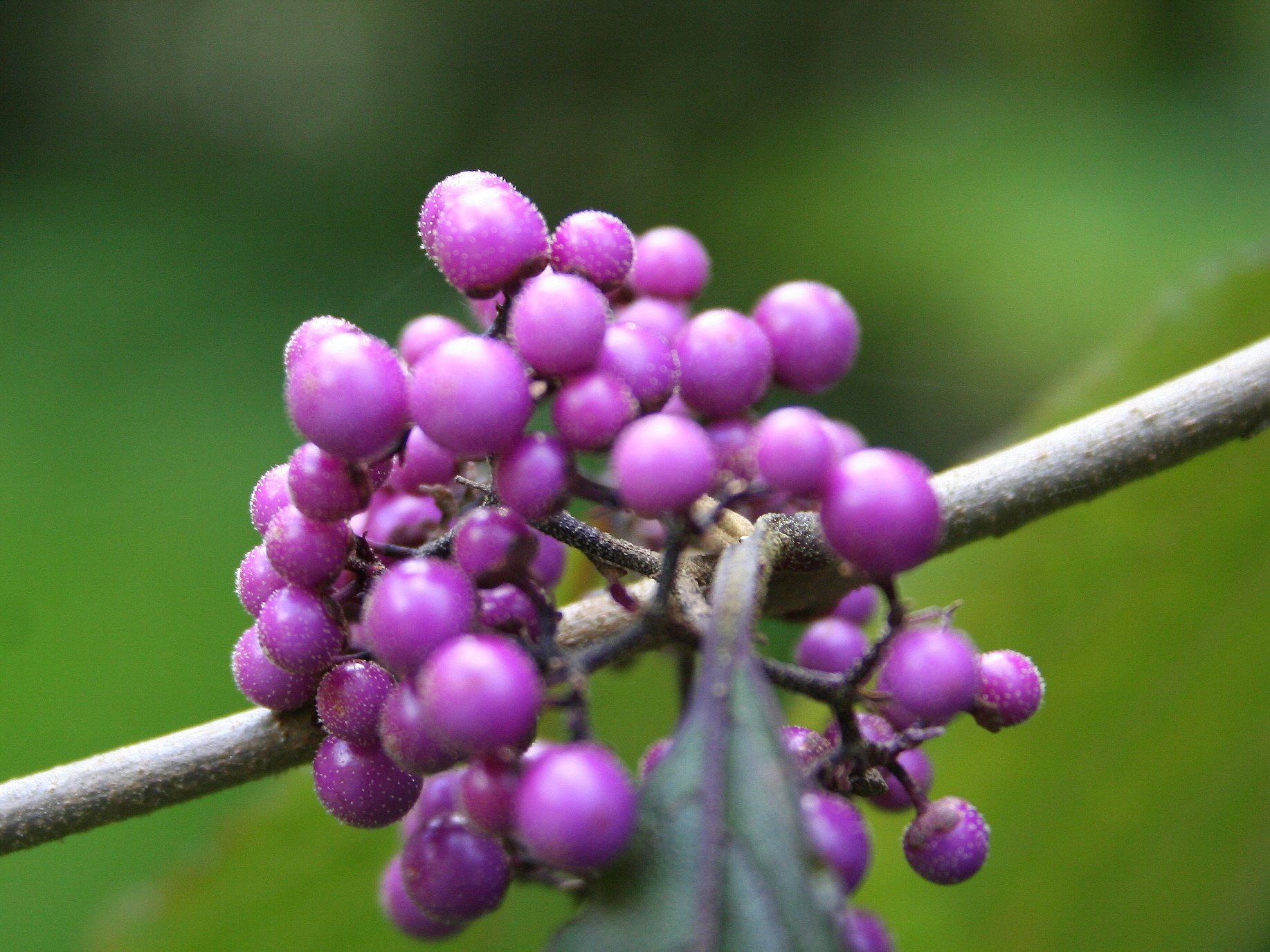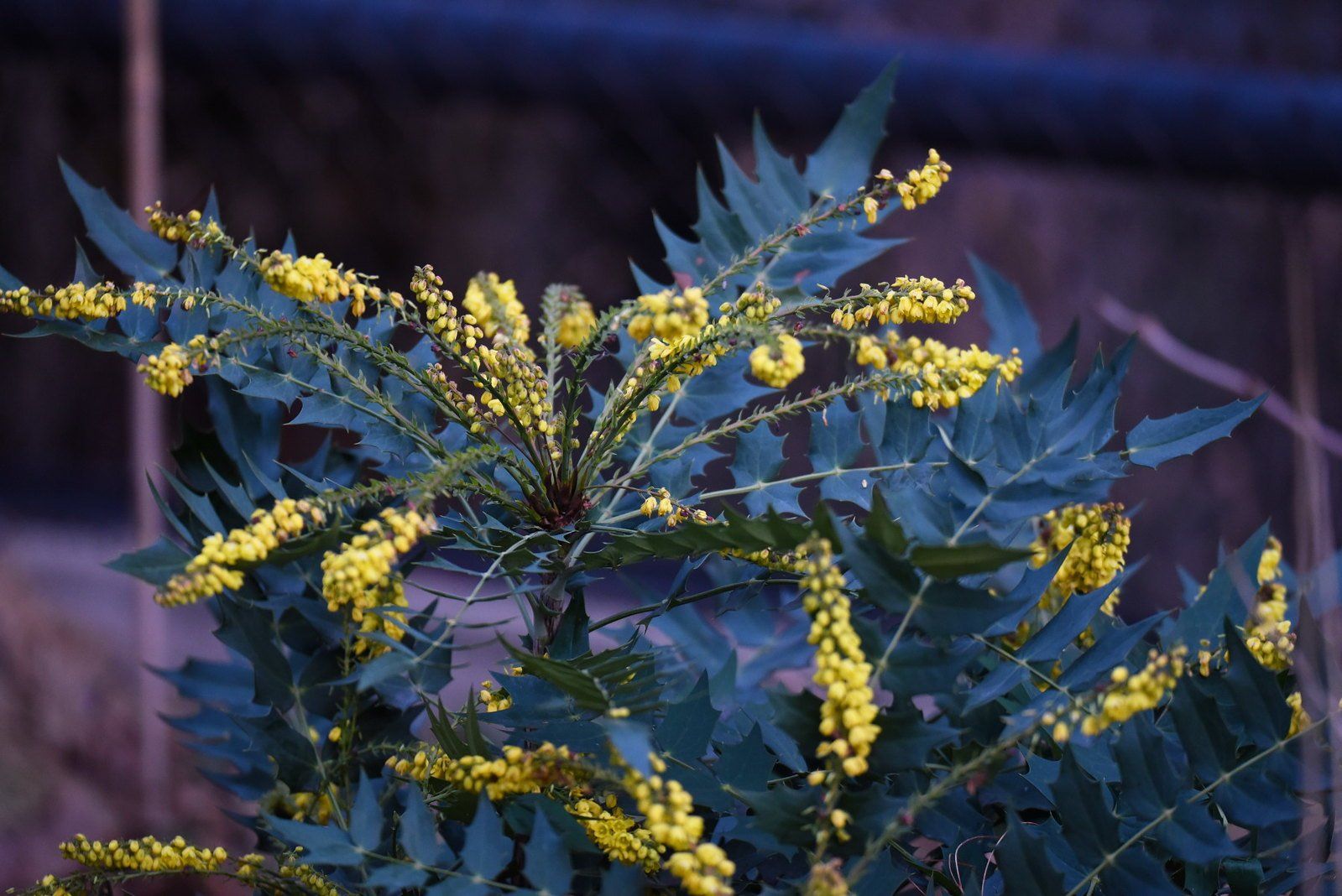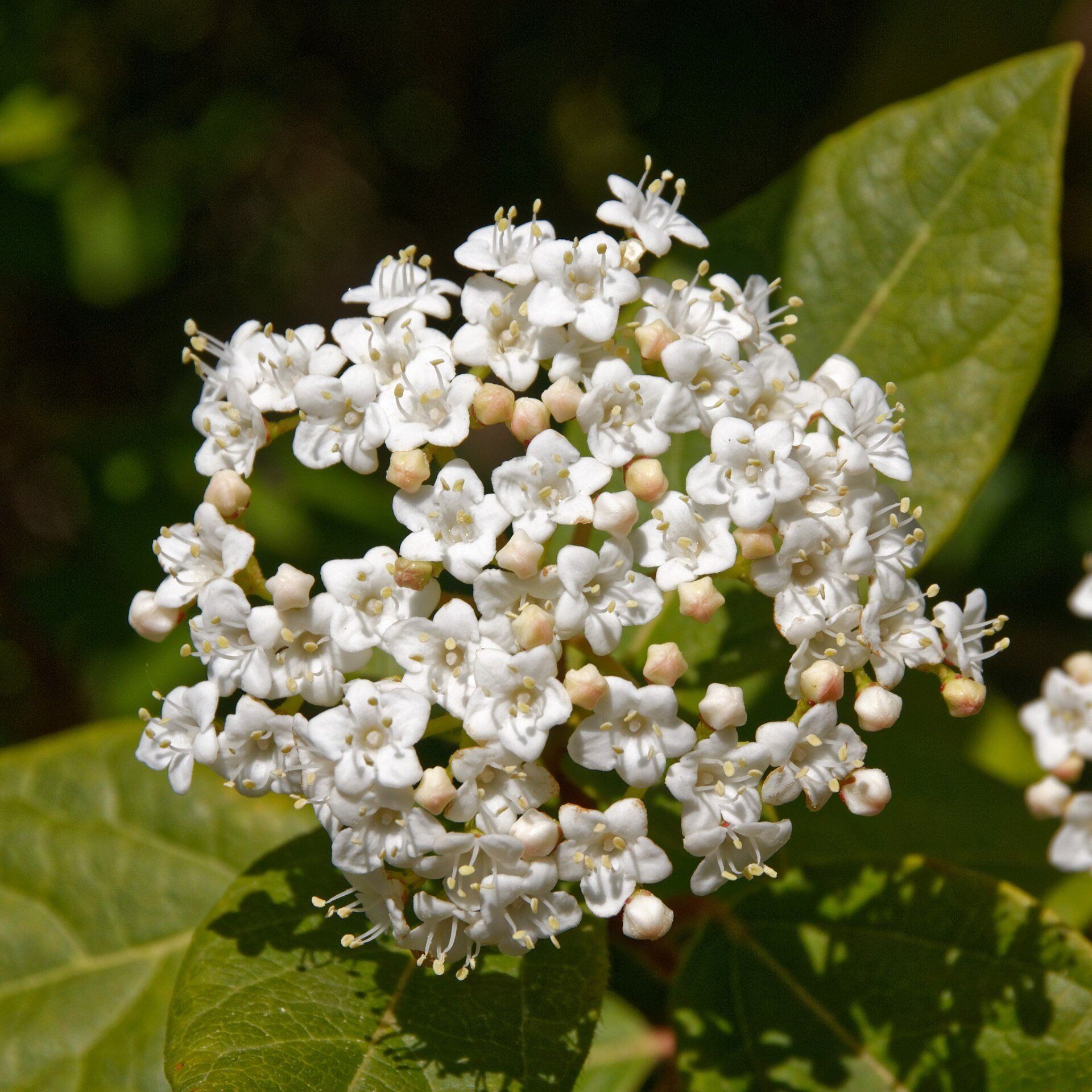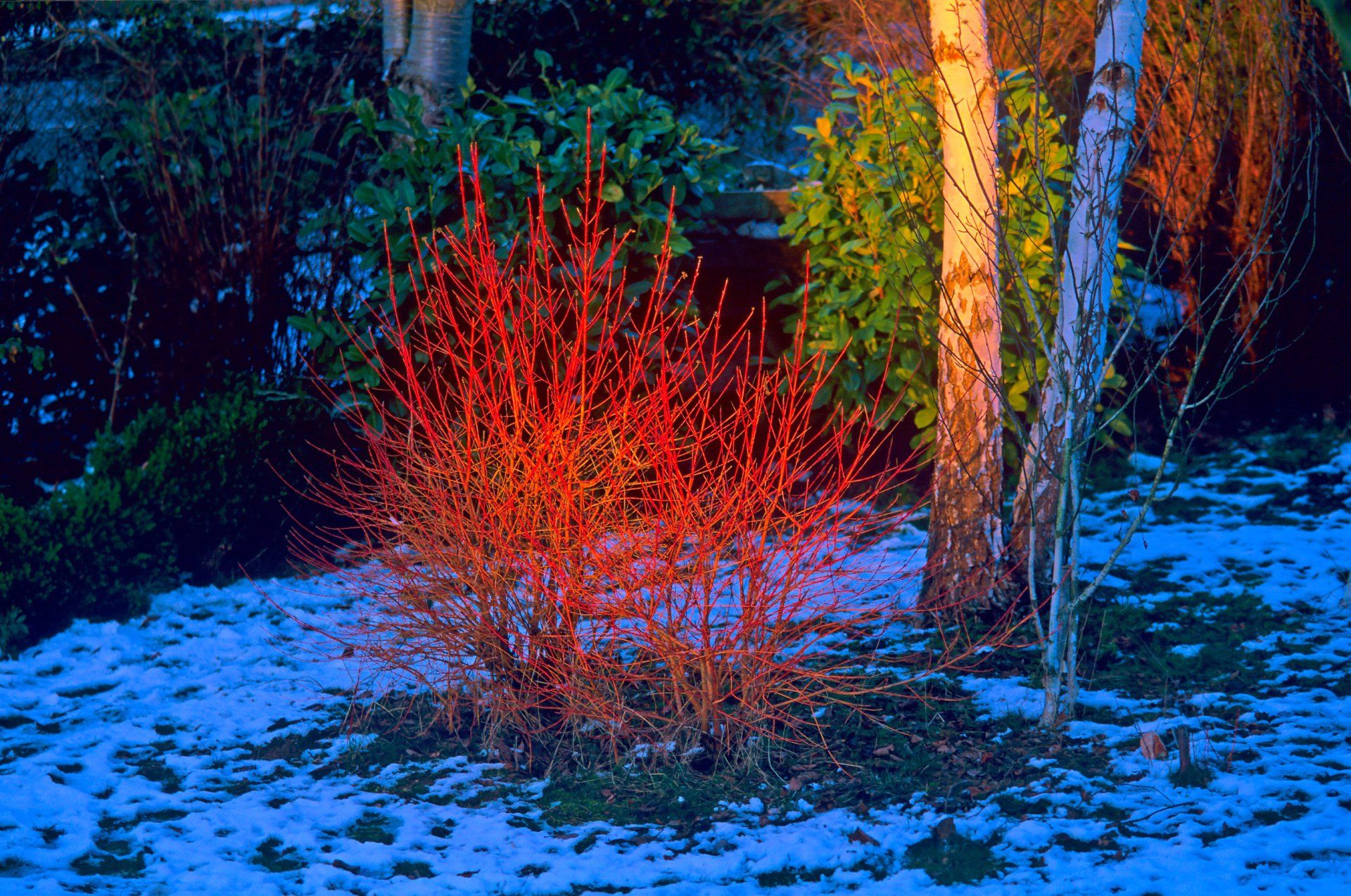Plant of the Week: Dogwood
Cornus sanguinea ‘Midwinter Fire’ is a species of dogwood native to most of Europe and western Asia, where it thrives in damp woodland edges and hedgerows. It is a deciduous broadleaf shrub with small, creamy-white flowers that bloom in May and June. It is typically grown for the brilliant, flame-coloured bark of its stems, which is bright orange-yellow at the base and red at the tips.
Dogwood looks particularly stunning when planted with evergreen shrubs and among spring flowers, as they loose their leaves in winter which exposes the attractive stems.
To achieve the brightest stem colour, it is recommended to leave the plant unpruned for the first year after planting in full sun and to then cut the stems back approximately 5-7cm from the ground before the buds break in March. Once pruned, apply a generous mulch around the base of the plant using well-rotted garden compost or horse manure.
If left unpruned, dogwood will grow to a height of around 6 metres, but most gardeners prune every year to improve the stem colour, which results in a height of around 2 metres. Direct sunlight allows the deep colour of the stems to fully develop.
Dogwood really loves damp soil beside water and will tolerate being submerged for most of the winter. The plant can quickly form dense groves, which make it effective at filling empty areas of boggy land. However, once established, dogwood will tolerate dry soil and even mild drought, provided a good amount of direct sunlight is available.
Dogwood is also known for attracting bees, birds, butterflies, moths and other pollinators. The leaves are eaten by the caterpillars of the case-bearer moth and its clusters of small black berries are eaten by many bird species, including finches and thrushes. While not suitable for human consumption, the berries are mentioned in historic texts as being used to make primitive inks and oils.

The genus name, Cornus, means "horn" in Latin. This references the hardness of the wood. The species name, sanguinea, is also Latin and means "blood red." Other names for this plant include European Dogwood, Blood-twigged Dogwood, Dogberry, and Common Dogwood.
The origin of the name ‘dogwood’ comes from its smooth, hard, straight twigs that were traditionally used to make butchers' skewers known as 'dags' or 'dogs' by the Saxons. Dogwood timber has also been historically used to make crucifixes, herding poles, and arrows.
Want to learn more about plants and gardening?
Join our weekly
Garden group.





